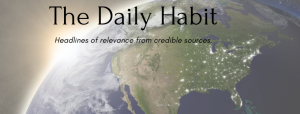By ALEXANDER MacLEAN
Cronkite News Service
PHOENIX (Thursday, Sept. 24) _ A new study suggesting that human activities are nearing or exceeding the boundaries of Earth’s ability to sustain life as we know it has special significance in the Southwest, which is especially vulnerable to the effects of climate change, two Arizona researchers who served as co-authors said Thursday.
“I don’t think we are taking climate change quite as seriously as we need to, given that we are one of the hot spots that are likely to see major impacts of climate change,” said Diana Liverman, a professor of geography and development at the University of Arizona and co-director of the school’s Institute of the Environment.
Liverman and Sander van der Leeuw, director of Arizona State University’s School of Human Evolution and Social Change, were among 29 scientists who worked on the study published in the Sept. 24 edition of the scientific journal Nature. It suggests that there are nine “planetary boundaries” that, when crossed, can have destructive and even catastrophic effects on the planet.
The study found that human activity has exceeded thresholds for climate change, biological diversity loss and nitrogen input into the atmosphere.
“Breaching any boundary actually triggers so many changes in the Earth’s system that all kinds of things could happen that we can’t foresee but are very dangerous,” van der Leeuw said in a telephone interview. “What we have done in this paper is try to emphasize that greenhouse gases are only part of the environmental problems that the world is facing.”
He said that by reducing electrical and water consumption, improving waste management and developing alternative energy sources, such as solar and wind, the people of Arizona can help reduce the state’s impact on the environment.
“Policymakers in Arizona need to work with the population to get a number of these ideas going,” van der Leeuw said.
Liverman said in a telephone interview that Arizona is at risk of losing biological diversity not only due to climate change but through development of open spaces.
“We are at risk of losing species, and when we lose species it throws off the balance of valuable ecosystems,” she said.
The study notes that the global extinction rate before the Industrial Age was one species per year; today, it is 100 per year, exceeding the boundary of 10 annually set by the scientists.
Meanwhile, Liverman said, policymakers need to begin planning for the adverse effects of boundaries that already have been passed.
“We have to think, particularly in Arizona, about how we are going to adapt our water systems if it gets warmer and how we are going to conserve valued ecosystems from biodiversity loss,” she said.


